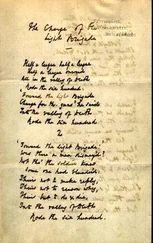Alfred Ellis - The History of the First West India Regiment
Здесь есть возможность читать онлайн «Alfred Ellis - The History of the First West India Regiment» — ознакомительный отрывок электронной книги совершенно бесплатно, а после прочтения отрывка купить полную версию. В некоторых случаях можно слушать аудио, скачать через торрент в формате fb2 и присутствует краткое содержание. Жанр: foreign_antique, foreign_prose, на английском языке. Описание произведения, (предисловие) а так же отзывы посетителей доступны на портале библиотеки ЛибКат.
- Название:The History of the First West India Regiment
- Автор:
- Жанр:
- Год:неизвестен
- ISBN:нет данных
- Рейтинг книги:3 / 5. Голосов: 1
-
Избранное:Добавить в избранное
- Отзывы:
-
Ваша оценка:
- 60
- 1
- 2
- 3
- 4
- 5
The History of the First West India Regiment: краткое содержание, описание и аннотация
Предлагаем к чтению аннотацию, описание, краткое содержание или предисловие (зависит от того, что написал сам автор книги «The History of the First West India Regiment»). Если вы не нашли необходимую информацию о книге — напишите в комментариях, мы постараемся отыскать её.
The History of the First West India Regiment — читать онлайн ознакомительный отрывок
Ниже представлен текст книги, разбитый по страницам. Система сохранения места последней прочитанной страницы, позволяет с удобством читать онлайн бесплатно книгу «The History of the First West India Regiment», без необходимости каждый раз заново искать на чём Вы остановились. Поставьте закладку, и сможете в любой момент перейти на страницу, на которой закончили чтение.
Интервал:
Закладка:
CHAPTER III.
THE RELIEF OF NINETY-SIX, 1781 – THE BATTLE OF EUTAW SPRINGS, 1781 – REMOVAL TO THE WEST INDIES
Lord Rawdon was not in a position to follow up his success at Hobkerk's Hill, and on the 3rd of May, 1781, Greene passed the Wateree, and occupied such positions as to prevent the garrison at Camden obtaining supplies. Generals Marion and Lee were also posted at Nelson's Ferry, to prevent Colonel Watson, who was advancing with 400 men, from joining Lord Rawdon, and Watson was obliged to alter his route. He marched down the north side of the Santee, crossed it near its mouth, with incredible labour advanced up its southern bank, recrossed it above the encampment of Marion and Lee, and arrived safely with his detachment at Camden on the 7th of May.
Thus reinforced, Lord Rawdon determined to attack Greene, and, on the night of the 8th, marched from Camden with his whole force. Greene, who had been informed of this movement, passed the Wateree and took up a strong position behind Saunders' Creek. Lord Rawdon followed him and drove in his outposts, but, finding the position was too strong for his small force, he returned to Camden.
Camden being too far advanced a post for Lord Rawdon to hold with the few troops at his disposal, he evacuated it on the 10th of May, and retired by Nelson's Ferry to the south of the Santee, and afterwards to Monk's Corner. In the meantime, attacks were made on the British posts in Georgia, Augusta itself being taken on the 5th of June, while the post of Ninety-six in South Carolina was closely invested by General Greene with the main American army in the Southern States.
About this time, a change took place in the South Carolina Regiment. Lord Rawdon, in a letter to Lieutenant-General Earl Cornwallis, dated Charlestown, June 5th, 1781, speaks of the difficulty which he has experienced in the formation of cavalry, and goes on to say that the inhabitants of Charlestown having subscribed 3000 guineas for a corps of dragoons, out of compliment to those gentlemen "I have ordered the South Carolina Regiment to be converted into cavalry, and I have the prospect of their being mounted and completely appointed in a few days."
On the 3rd of June, Lord Rawdon had received considerable reinforcements from England, and on the 9th he left Charlestown with about 2000 men, including the South Carolina Regiment in its new capacity, for the relief of Ninety-six. In their rapid progress over the whole extent of South Carolina, through a wild country and under a burning sun, the sufferings of the troops were severe, but they advanced with celerity to the assistance of their comrades. On the 11th of June, General Greene received notice of Lord Rawdon's march, and immediately sent Sumpter with the whole of the cavalry to keep in front of the British army and retard its progress. Lord Rawdon, however, passed Sumpter a little below the junction of the Saluda and Broad Rivers, and that officer was never able to regain his front.
In the meantime, the Americans were pushing hard the garrison of Ninety-six; they were nearly reduced to extremities, and in a few days must have surrendered; but the rapid advance of Lord Rawdon left Greene no alternative but to storm or raise the siege. On the 18th of June, he made a furious assault upon the place; but, after a desperate conflict of nearly an hour, was compelled to retire. Next day he retreated, crossing the Saluda on the 20th, and encamping at Little River.
On the morning of the 21st, Lord Rawdon arrived at Ninety-six, and the same evening set out in pursuit of Greene, who, however, retreated; and Rawdon, despairing of overtaking him, returned to Ninety-six. He now found it necessary to evacuate that position and contract his posts; and, having destroyed the works, he marched towards the Congaree. There, on the 1st of July, while out foraging, two officers and forty dragoons of the South Carolina Regiment were surrounded and taken prisoners by Lee's Legion. This blow sadly crippled Lord Rawdon, who was much in need of cavalry, and two days later he retreated to Orangeburgh.
The summer heats now coming on, Lord Rawdon proceeded to England on sick leave, leaving Lieutenant-Colonel Stuart in command of the troops in South Carolina and Georgia. The new commander at once proceeded with the army to the Congaree, and formed an encampment near its junction with the Wateree.
Towards the end of August, while Lieutenant-Colonel Stuart was expecting a convoy of provisions from Charlestown, he received information that General Greene, who had been reinforced and was now at the head of 2500 men, was moving towards Friday's Ferry on the Congaree. The American cavalry was so numerous and enterprising that the expected convoy, then at Martin's, fifty-six miles from the British camp, would inevitably fall into their hands unless protected by an escort of at least 400 men; and Lieutenant-Colonel Stuart's force being too small to admit of so considerable a body being detached without risk, he determined to retreat by slow marches to Eutaw Springs, about sixty miles north of Charlestown, and meet the convoy on the way.
General Greene followed the retiring British, and, on the 7th of September, arrived within seven miles of Eutaw Springs. Being there reinforced by General Marion and his corps, he resolved to attack next day. At six in the morning, two deserters from the American army entered the British camp, and informed Stuart of the approach of the enemy; but little credit was given to their report. At that time Major Coffin, with 140 infantry and 50 of the South Carolina Regiment, was out foraging for roots and vegetables – the army having neither corn nor bread – in the direction in which the Americans were advancing. About four miles from the camp at Eutaw, that party was attacked by the American advanced guard and driven in with loss. Their return convinced Colonel Stuart of the approach of the enemy, and the British army was soon drawn up obliquely across the road on the height near Eutaw Springs.
The firing began between two and three miles from the British camp. The British light parties were driven in on their main body, and the first line of the Americans attacked with great impetuosity. For a short time the conflicting ranks were intermingled, and the officers fought hand to hand. At that critical moment, General Lee, who had turned the left flank of the British, charged them in the rear. They were broken and driven off the field, their guns falling into the hands of the Americans, who eagerly pressed on their retreating adversaries.
At this crisis, Colonel Stuart ordered a strong detachment to take post in a large three-storey brick house, which was in rear of the army on the right, while another occupied an adjoining palisaded garden, and some close underwood. The Americans made the most desperate efforts to dislodge them from their posts; but every attack was met with determined courage. Four pieces of artillery were brought to bear on the house, but made no impression on its solid walls, from which a close and destructive fire was kept up, as well as from the adjoining enclosure. Almost all the gunners were killed and wounded; and the guns had been pushed so near the house that they could not be brought off. Colonel Washington attempted to turn the British right, and charge them in rear; but his horse was shot under him, and he was wounded and made prisoner. After every attempt to dislodge the British from their position had failed, General Greene drew off his men, and retired to the ground which he had left in the morning. This conflict had lasted nearly four hours. The Americans lost 555, the British 693. The British kept their ground during the night, and next day began to retreat. About fourteen miles from the field of battle, Lieutenant-Colonel Stuart was met by a reinforcement, under Major McArthur, marching from Charlestown to his assistance. Thus strengthened, he proceeded to Monk's Corner.
Читать дальшеИнтервал:
Закладка:
Похожие книги на «The History of the First West India Regiment»
Представляем Вашему вниманию похожие книги на «The History of the First West India Regiment» списком для выбора. Мы отобрали схожую по названию и смыслу литературу в надежде предоставить читателям больше вариантов отыскать новые, интересные, ещё непрочитанные произведения.
Обсуждение, отзывы о книге «The History of the First West India Regiment» и просто собственные мнения читателей. Оставьте ваши комментарии, напишите, что Вы думаете о произведении, его смысле или главных героях. Укажите что конкретно понравилось, а что нет, и почему Вы так считаете.












